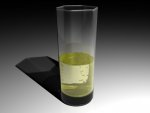- Messages
- 157
glas, fluids, lighting - still challenging for me 
hi guys,
I was fooling around with todds awesome Loft script a little and now I gave up after a few hours...
I find it still very challenging to set up glas and fluid materials (even thoug I found this: http://hyperphysics.phy-astr.gsu.edu/hbase/tables/indrf.html which I find kinda helpful).
Another thing I just cant seem to get right is lighting. As a scene is only really good with a nice lighting and good materials:
Can you guys give some advise, hints, tips and or tricks on glas, fluids and lighting?
attached you'll find the *.jas and a picture of the scene, which I think is just not right...
Many thanks in advance for posting your material settings and light source setups.
-t0m
hi guys,
I was fooling around with todds awesome Loft script a little and now I gave up after a few hours...
I find it still very challenging to set up glas and fluid materials (even thoug I found this: http://hyperphysics.phy-astr.gsu.edu/hbase/tables/indrf.html which I find kinda helpful).
Another thing I just cant seem to get right is lighting. As a scene is only really good with a nice lighting and good materials:
Can you guys give some advise, hints, tips and or tricks on glas, fluids and lighting?
attached you'll find the *.jas and a picture of the scene, which I think is just not right...
Many thanks in advance for posting your material settings and light source setups.
-t0m



